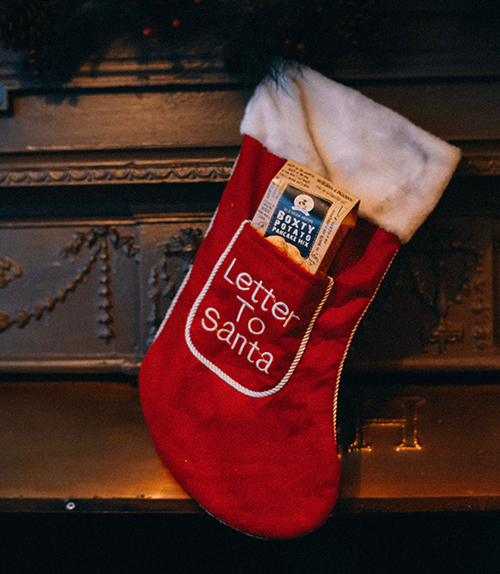The History Of Christmas Stockings: A Festive Tradition With Enduring Charm
The History of Christmas Stockings: A Festive Tradition with Enduring Charm
Related Articles: The History of Christmas Stockings: A Festive Tradition with Enduring Charm
- Christmas Stockings For Dogs: A Comprehensive Guide To Festive Cheer For Your Furry Friends
- Christmas Quotes With Images 2024: Spread The Joy And Festivity
- Christmas Quotes Clip Art Free 2024
- Christmas Recipes: Salads To Delight In 2024
- Christmas Sale For Men 2024: Ultimate Guide To Finding The Perfect Gifts
Introduction
With great pleasure, we will explore the intriguing topic related to The History of Christmas Stockings: A Festive Tradition with Enduring Charm. Let’s weave interesting information and offer fresh perspectives to the readers.
Table of Content
Video about The History of Christmas Stockings: A Festive Tradition with Enduring Charm
The History of Christmas Stockings: A Festive Tradition with Enduring Charm

Introduction:
As the festive season of Christmas approaches, the image of brightly colored stockings hung by the fireplace evokes a sense of warmth, nostalgia, and anticipation. The tradition of Christmas stockings, a beloved symbol of the holiday, has a rich and intriguing history that spans centuries and cultures. This article delves into the origins and evolution of Christmas stockings, exploring their cultural significance and the enduring charm they hold in the hearts of people around the world.
Origins and Early Traditions:
The earliest known references to Christmas stockings can be traced back to the 12th century, during the reign of Charlemagne in the Holy Roman Empire. It is believed that St. Nicholas, the patron saint of children, would visit homes on the eve of his feast day (December 6th) and leave small gifts in the shoes or boots of well-behaved children.
Over time, the practice of leaving treats for St. Nicholas evolved into the tradition of hanging stockings by the fireplace on Christmas Eve. In many European countries, it was customary for children to put out their shoes or stockings filled with carrots, hay, or straw for St. Nicholas’s horse. In return, the saint would fill the stockings with sweets and small toys.
The Legend of the Three Daughters:
One of the most popular legends associated with Christmas stockings involves three poor sisters who could not afford dowries to get married. St. Nicholas, hearing of their plight, visited their home on Christmas Eve and threw three bags of gold down their chimney, which landed in their stockings that were hung by the fire to dry. The gold enabled the sisters to find husbands and live happily ever after.
The Evolution of Christmas Stockings:
As the tradition of Christmas stockings spread throughout Europe and beyond, they underwent various changes in design and materials. In the 18th century, stockings began to be made specifically for Christmas, often decorated with festive motifs such as holly, ivy, and reindeer.
During the Victorian era, Christmas stockings became increasingly elaborate and ornamental, often made of velvet or silk and adorned with intricate embroidery and beading. They were also used as a way to display small gifts and treats for children.
The Arrival of Santa Claus:
In the 19th century, the figure of Santa Claus, based on the Dutch Sinterklaas, became associated with Christmas stockings. Santa Claus was depicted as a jolly old man with a white beard who delivered gifts to children on Christmas Eve. The tradition of hanging stockings by the fireplace for Santa Claus to fill became firmly established during this time.
Modern Christmas Stockings:
Today, Christmas stockings remain an integral part of the holiday season in many countries around the world. They are typically hung by the fireplace, on the Christmas tree, or on a special stocking holder. Stockings are often personalized with the names of family members or friends and filled with a variety of treats and gifts, such as candy, chocolates, toys, and small gadgets.
Cultural Significance and Symbolism:
Christmas stockings hold a deep cultural significance for many people. They represent the anticipation and excitement of Christmas morning, the warmth and togetherness of family gatherings, and the spirit of giving and receiving. The act of hanging stockings is often seen as a way to welcome Santa Claus and invite him to bring joy and blessings to the household.
Enduring Charm:
The tradition of Christmas stockings has endured for centuries, transcending cultural and geographical boundaries. It is a tradition that has been passed down from generation to generation, bringing joy and festive cheer to countless individuals and families.
The charm of Christmas stockings lies in their simplicity, their ability to evoke childhood memories, and their timeless connection to the spirit of Christmas. Whether they are filled with treats, gifts, or simply the anticipation of the holiday, Christmas stockings continue to hold a special place in the hearts of people around the world.
Conclusion:
The history of Christmas stockings is a tapestry woven with legend, tradition, and cultural significance. From their humble beginnings as shoes left out for St. Nicholas to their modern-day role as festive symbols of the holiday season, Christmas stockings have played an enduring role in shaping the Christmas experience for generations. As we gather around the fireplace on Christmas Eve, hanging our stockings with hope and anticipation, we connect with a tradition that has brought joy and festive cheer to countless individuals and families throughout the ages.








Closure
Thus, we hope this article has provided valuable insights into The History of Christmas Stockings: A Festive Tradition with Enduring Charm. We thank you for taking the time to read this article. See you in our next article!